Nara Sightseeing & Attractions
Our top picks of things to see and do
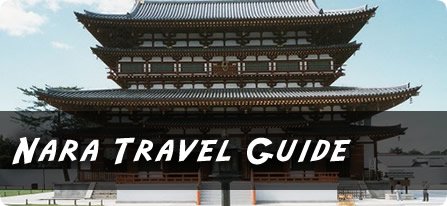
Todaiji Temple

The pride of Nara, Todaiji Temple (East Great Temple), stands as not only the most important temple in Japan but the largest wooden structure in the world. And in the spirit of all things big, it also houses one of Japan's largest Buddha statues, this one made of bronze and stands 49 feet high.
Ironically the Todaiji we see today is only 2/3 the size of the original Todaiji that was built in 752. The temple was destroyed in 1567 and rebuilt shortly after in 1692. However it was not rebuilt exactly to scale of the original for financial reasons.
Aside from the enormous main hall and Buddha there are many other things to see, including the massive wooden gate that leads up to the hall and the two giant statue guardians that stand on the left and right (26 feet high)
Isuien Garden and Yoshikien Garden
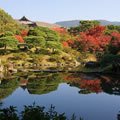
Compared to Tokyo and Kyoto, Nara’s complement of traditional Japanese gardens is surprisingly lacking. The only garden worthy of mention is the Iseien, sandwiched between Todaiji and the Neiraku Art Museum. While modest in size the Isuien is beautifully designed and landscaped. It is ideally viewed during the Autumn, early Spring or mid Summer.
Across a small river on the South side you can find the Yoshikien Garden which is very nice in its own right and should be explored also if you are already at the Isuien.
Kofukuji Temple
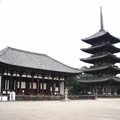
Another spectacular sightseeing attraction in the vicinity of Todaiji and the Isuien Gardens is the venerable Kofukuji Temple.
This complex once housed over 175 separate buildings in its hay day between 669-710. Now there are less than a dozen left. Remaining buildings include: a three story pagoda, a five story pagoda (164 feet), The Eastern Golden Hall, The Temples Treasure House (HIGHLY recommended), and two octagonal buildings.
In the spirit of preserving its history the city has begun work on restoring previously destroyed buildings such as the Central Golden Hall which is estimated to be finished in 2019.
http://www.kohfukuji.com/english.html
Nara Park
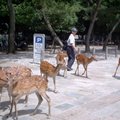
Like Staten Island NYC is inhabited by wild Peacocks, Nara is completely over run with wild deer. Well, not over run per se. There is no fear, as you can always smell them before you see them.
All kidding aside tourists have been known to be accosted by said feral deer. Its not out of malice however, they just want some shika senbei! (Special crackers that you can buy from vendors on the street for feeding the deer) So make sure you have some with you, should you be attacked and you need a means to escape!
You'll find the deer (shika) freely roaming the sidewalks, greens and smaller streets within the park. They are generally friendly and willing to be petted and more willing to be fed.
One thing tourists won't expect until they step into the park is the rather strong smell of deer fecal matter. Worry not however, you get desensitized to it within 10 minutes.
Throughout the park and park outskirts you'll find dozens of traditional eateries where you can grab local food, fast and cheap.
Heijo Kyo (Nara Palace)
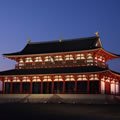
During the Nara Period (710-784) Nara became the first permanent capital of Japan, and its Palace was located in what is now the ruins of Heijo-Kyo. Reconstruction efforts have been few over the past thousand years, however a few buildings have been: The Suzaku Gate (The main gate of the Palace at the South end), The East Palace Garden and the Audience Hall, a grand building which was just finished being rebuilt in 2010.
Visitors to Heijo-kyo can also enjoy the Excavation Site Exhibition Hall and the Heijokyo History Museum, where they can see age old artifacts of the original palace.
http://www.nabunken.go.jp/heijo/museum/
Horyuji Temple
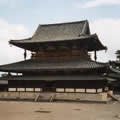
The Horyuji Temple stands as the world's oldest surviving wooden building. Completed in 607 it then burnt down in 670 but was rebuilt shortly after, around 710. This rebuilt temple is the one that still stands today ten miles South West of Nara City.
However not all buildings of the complex survived 1400 years of fires, earthquakes and typhoons. The original buildings are: the five-story pagoda in the central grounds, the centerpiece of the temple complex, along with the Golden Hall next to it. The two others are the inner gate south of the ancient pavilions, and most of the corridor that wraps around the central perimeter.





